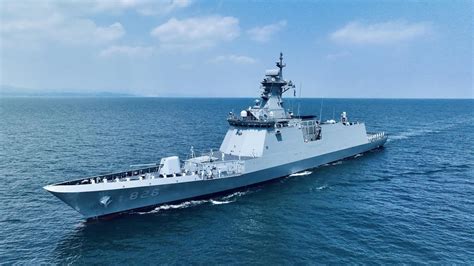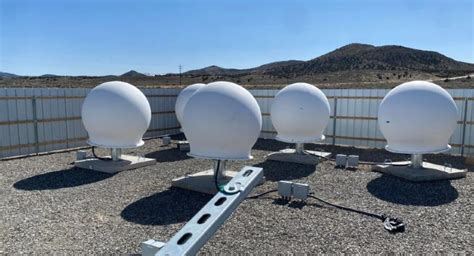
A North Korean frigate, heavily damaged and partially submerged after an apparent mishap, has been salvaged and brought back to the surface, revealing the extent of the vessel’s battered condition. Satellite imagery indicates significant damage to the ship’s hull and superstructure, raising questions about North Korea’s naval capabilities and maintenance practices.
Satellite images taken on April 17 showed the frigate afloat again, according to U.S. government sources, after images taken on or around March 23 depicted the warship partially sunk near a North Korean naval shipyard. The incident, which garnered significant attention among military analysts, underscores the challenges faced by the isolated nation in maintaining its aging naval fleet amid international sanctions and resource constraints. The frigate, believed to be a relatively small, domestically-built vessel, suffered extensive damage, with visible breaches and structural weaknesses, suggesting the incident was more than a minor accident.
Salvage Operation and Damage Assessment
The frigate’s reappearance above water confirms that North Korea undertook a salvage operation, a complex undertaking that highlights the regime’s determination to preserve its military assets, however dilapidated. Imagery analysis suggests that the vessel was raised using pontoons and heavy-lift equipment, likely mobilized from nearby shipyards and naval facilities. The extent of the damage is substantial, with clear evidence of corrosion, structural fatigue, and potential breaches in the hull. Parts of the superstructure appear warped or collapsed, indicating the force of the incident that led to the ship’s partial submersion.
“The images suggest that the ship sustained considerable damage, raising questions about the operational readiness of North Korea’s navy,” said one analyst who reviewed the satellite imagery. The analyst, speaking on condition of anonymity, noted that the frigate’s condition highlights the dual challenges of maintaining an aging fleet and operating under severe economic constraints.
The specific cause of the frigate’s sinking remains unconfirmed, although experts speculate about potential factors such as mechanical failure, navigational errors, or even unreported collisions. Regardless of the cause, the incident exposes vulnerabilities within North Korea’s naval infrastructure and maintenance capabilities.
Implications for North Korea’s Naval Capabilities
The incident involving the frigate has broader implications for North Korea’s naval strength and regional security dynamics. The North Korean navy, while possessing a large number of vessels, is largely comprised of outdated platforms and smaller patrol craft, struggling to keep pace with modern naval warfare technology. The loss or damage to even a single frigate can have a tangible impact on the fleet’s overall operational capacity.
The frigate in question is believed to be one of the older vessels in the North Korean navy, primarily designed for coastal patrol and anti-submarine warfare. These ships are typically equipped with basic armaments, including deck guns, torpedo launchers, and limited anti-aircraft capabilities. While they pose a limited threat to modern warships, they play a crucial role in securing North Korea’s territorial waters and projecting a minimal degree of naval power.
“The North Korean navy is largely a coastal defense force, and incidents like this underscore the challenges they face in maintaining even that limited capability,” said a naval expert. “They rely on quantity over quality, but even maintaining a large number of older vessels requires significant resources and technical expertise.”
The episode also raises questions about North Korea’s shipbuilding industry and its capacity to repair or replace damaged warships. North Korea has invested in domestic shipbuilding programs, but these efforts are often hampered by shortages of raw materials, outdated technology, and the impact of international sanctions. The frigate incident may further strain these limited resources, potentially affecting North Korea’s ability to modernize or expand its naval fleet.
Geopolitical Context and Regional Security
The sinking and subsequent salvage of the North Korean frigate occurred against a backdrop of heightened tensions on the Korean Peninsula. North Korea has continued to pursue its nuclear weapons and ballistic missile programs, defying international resolutions and sanctions. These activities have led to increased military deployments and exercises by the United States and its allies in the region, raising the risk of miscalculation or escalation.
The incident involving the frigate could be interpreted as a sign of weakness or vulnerability, potentially emboldening North Korea to engage in more provocative actions to demonstrate its resolve. Alternatively, it could serve as a cautionary tale, highlighting the risks associated with operating an aging and poorly maintained military force.
“The North Koreans are facing increasing pressure on multiple fronts, and this naval incident adds another layer of complexity to the situation,” said a political analyst specializing in North Korean affairs. “They may feel compelled to respond in some way to project an image of strength, even if it means taking risks.”
The United States and its allies, particularly South Korea and Japan, are closely monitoring North Korea’s military activities, including its naval operations. These countries have invested heavily in advanced naval technology and maintain a strong presence in the region, serving as a deterrent against North Korean aggression. The frigate incident is likely to prompt further analysis of North Korea’s naval capabilities and potential vulnerabilities, informing future defense planning and security strategies.
The Role of Sanctions and Resource Constraints
International sanctions have played a significant role in limiting North Korea’s access to critical technologies and resources needed to maintain and modernize its military. These sanctions, imposed by the United Nations and individual countries, target North Korea’s weapons programs and restrict its ability to import dual-use goods and materials.
The impact of sanctions is evident in the aging condition of North Korea’s naval fleet and the challenges it faces in procuring spare parts and modern equipment. The frigate incident underscores the limitations imposed by these sanctions, which have made it difficult for North Korea to sustain its military capabilities.
“Sanctions are designed to constrain North Korea’s ability to develop and proliferate weapons of mass destruction, but they also have a broader impact on its economy and military,” said an expert on international sanctions. “The frigate incident is a clear example of how sanctions can affect North Korea’s ability to maintain its conventional military forces.”
However, sanctions have not completely halted North Korea’s military activities. The country has developed sophisticated methods to evade sanctions, including smuggling, cybercrime, and deceptive financial practices. These activities allow North Korea to generate revenue and acquire essential resources, albeit at a higher cost and with greater difficulty.
Future Outlook and Potential Scenarios
The future of North Korea’s naval capabilities remains uncertain, with several potential scenarios unfolding in the coming years. One possibility is that North Korea will continue to prioritize its nuclear weapons and ballistic missile programs, diverting resources away from its conventional military forces. This could lead to further deterioration of its naval fleet and increased vulnerability to external threats.
Another scenario is that North Korea will attempt to modernize its navy through domestic shipbuilding programs and covert procurement of foreign technology. This would require significant investment and technical expertise, but it could potentially enhance North Korea’s naval capabilities and regional influence.
A third scenario is that North Korea will seek to improve relations with other countries, potentially leading to a reduction in sanctions and increased access to foreign assistance. This could allow North Korea to address its economic challenges and invest in the modernization of its military, including its naval fleet.
Ultimately, the future of North Korea’s navy will depend on a range of factors, including its political leadership, economic conditions, and international relations. The frigate incident serves as a reminder of the challenges and uncertainties facing North Korea’s military and the importance of monitoring its activities closely.
Detailed Analysis of the Frigate and its Role
The salvaged frigate represents a critical component of North Korea’s naval defense strategy, primarily designed for coastal patrol and anti-submarine warfare. These vessels, though not technologically advanced compared to modern warships, serve a vital role in safeguarding North Korea’s territorial waters and projecting a semblance of naval power. Understanding the specific characteristics and capabilities of this frigate provides valuable insights into North Korea’s overall naval posture.
Vessel Specifications and Armament
The frigate is believed to be a domestically-built vessel, reflecting North Korea’s efforts to achieve self-reliance in military hardware production. While precise technical specifications remain classified, analysts estimate that the frigate is relatively small, likely displacing between 1,000 and 1,500 tons. Its armament typically includes:
- Deck Guns: These are the primary offensive weapons, used for surface engagement and shore bombardment. The caliber and range of these guns are limited, but they can still pose a threat to smaller vessels and coastal installations.
- Torpedo Launchers: These are designed to target submarines and surface ships. The effectiveness of these torpedoes depends on factors such as their age, maintenance, and the sophistication of their guidance systems.
- Anti-Aircraft Missiles: Some frigates may be equipped with short-range anti-aircraft missiles for self-defense. However, these missiles are likely to be outdated and vulnerable to modern countermeasures.
- Depth Charge Launchers: Used for anti-submarine warfare, these launchers deploy depth charges to destroy or deter enemy submarines.
Operational Role and Strategic Importance
The frigate’s primary mission is to patrol North Korea’s coastal waters, deterring incursions and protecting its maritime assets. These vessels also participate in naval exercises and training activities, enhancing the readiness of North Korea’s naval forces. While the frigate’s capabilities are limited, it plays a crucial role in maintaining North Korea’s maritime security.
“These frigates are not designed to project power far from North Korean shores, but they are essential for coastal defense and maintaining a minimal naval presence,” said a naval analyst. “They serve as a deterrent against smaller-scale incursions and contribute to North Korea’s overall maritime defense strategy.”
The frigate’s sinking and subsequent salvage highlight the importance that North Korea places on these vessels, despite their age and limitations. The regime’s decision to undertake a salvage operation underscores its determination to preserve its military assets, even in the face of economic challenges and international sanctions.
Potential Causes of the Incident
The precise cause of the frigate’s sinking remains a subject of speculation, but several potential factors could have contributed to the incident. These include:
- Mechanical Failure: The frigate’s aging machinery and equipment may have suffered a critical malfunction, leading to a loss of power or propulsion. This could have resulted in the vessel drifting into shallow waters or colliding with an underwater object.
- Navigational Error: A navigational error by the ship’s crew could have led to the vessel running aground or striking an obstruction. This is particularly likely in North Korea’s coastal waters, which are often poorly charted and subject to strong currents and tides.
- Collision: The frigate may have collided with another vessel or a submerged object, causing damage to its hull and leading to its partial submersion.
- Poor Maintenance: Inadequate maintenance and repairs could have weakened the frigate’s structural integrity, making it more vulnerable to damage from routine operations or minor incidents.
“It is difficult to say for sure what caused the frigate to sink, but a combination of factors is likely to have been involved,” said a maritime expert. “The age of the vessel, the challenging operating environment, and the potential for human error all contribute to the risk of such incidents.”
Regardless of the cause, the frigate’s sinking underscores the challenges faced by North Korea in maintaining its naval fleet and ensuring the safety of its vessels.
Impact on North Korea’s Naval Strategy
The incident involving the frigate is likely to have a significant impact on North Korea’s naval strategy, forcing the regime to reassess its priorities and allocate resources accordingly. The loss of a frigate, even a relatively old one, can strain North Korea’s limited naval capabilities and affect its ability to patrol its coastal waters.
“The North Koreans will undoubtedly be concerned about the loss of this frigate, and they will likely take steps to prevent similar incidents from occurring in the future,” said a military analyst. “This could involve increasing investment in maintenance and training, improving navigational practices, and potentially seeking to acquire new vessels from abroad.”
The incident may also prompt North Korea to focus more on asymmetric warfare tactics, such as the use of submarines and small attack craft, which are more difficult to detect and counter. This could involve investing in the development of advanced submarines and deploying more of these vessels in North Korea’s coastal waters.
The Salvage Operation: A Technical Perspective
The successful salvage of the partially submerged frigate represents a significant technical achievement for North Korea, demonstrating its ability to undertake complex maritime operations. The salvage operation likely involved a combination of specialized equipment and skilled personnel, requiring careful planning and execution.
The basic steps involved in the salvage operation would likely have included:
- Assessment: Divers would have been deployed to assess the extent of the damage to the frigate and determine the best method for raising it.
- Sealing: Damaged areas of the hull would have been sealed to prevent further water from entering the vessel.
- Pumping: Water would have been pumped out of the frigate to reduce its weight and increase its buoyancy.
- Lifting: Pontoons or other lifting devices would have been attached to the frigate to raise it from the seabed.
- Towing: The raised frigate would have been towed to a shipyard or other facility for repairs.
“Salvaging a partially submerged warship is a challenging undertaking, requiring specialized expertise and equipment,” said a salvage expert. “The North Koreans have demonstrated that they are capable of conducting such operations, but it is likely to have been a costly and time-consuming effort.”
The salvage operation may have also involved the use of specialized underwater welding techniques to repair damaged sections of the hull. This would have required skilled welders and specialized equipment, further highlighting North Korea’s technical capabilities.
Future Implications for Regional Stability
The frigate incident underscores the ongoing tensions and uncertainties in the Korean Peninsula. North Korea’s continued pursuit of nuclear weapons and ballistic missiles, combined with its aging military and challenging economic conditions, creates a volatile security environment.
The United States and its allies, particularly South Korea and Japan, are closely monitoring North Korea’s activities and maintaining a strong military presence in the region. These countries are committed to deterring North Korean aggression and maintaining stability in the region.
The frigate incident serves as a reminder of the importance of dialogue and diplomacy in resolving the challenges posed by North Korea. A peaceful resolution to the Korean Peninsula issue requires a commitment from all parties to engage in meaningful negotiations and address the underlying causes of tension.
Frequently Asked Questions (FAQ)
-
What caused the North Korean frigate to sink?
- The exact cause remains unconfirmed, but potential factors include mechanical failure, navigational error, a collision, or poor maintenance.
-
What kind of damage did the frigate sustain?
- Satellite imagery indicates significant damage to the hull and superstructure, including visible breaches, corrosion, structural fatigue, and potential warping or collapse of parts of the superstructure.
-
How does this incident impact North Korea’s naval capabilities?
- The incident underscores the challenges North Korea faces in maintaining its aging naval fleet, potentially impacting its operational readiness and coastal defense capabilities.
-
What does the salvage operation reveal about North Korea’s capabilities?
- The salvage operation demonstrates North Korea’s determination to preserve its military assets and its ability to undertake complex maritime operations, despite resource constraints.
-
What are the geopolitical implications of this incident?
- The incident occurs against a backdrop of heightened tensions on the Korean Peninsula and could be interpreted as a sign of weakness or vulnerability, potentially influencing North Korea’s future actions and regional security dynamics.
-
What type of frigate was it?
- It is believed to be a relatively small, domestically-built vessel primarily designed for coastal patrol and anti-submarine warfare. Its design is aging and not comparable to modern warships.
-
How does North Korea finance its military, given international sanctions?
- North Korea employs various methods to evade sanctions, including smuggling, cybercrime, and deceptive financial practices, to generate revenue and acquire essential resources for its military.
-
What role do international sanctions play in North Korea’s military readiness?
- Sanctions limit North Korea’s access to critical technologies and resources needed to maintain and modernize its military, impacting the condition of its fleet and its ability to procure spare parts and modern equipment.
-
What is the response of South Korea and the United States to this incident?
- South Korea and the United States closely monitor North Korea’s military activities, including its naval operations, and maintain a strong presence in the region to deter aggression and maintain stability.
-
What are the potential long-term impacts on North Korea’s naval strategy?
- The incident may prompt North Korea to reassess its naval priorities, potentially focusing on asymmetric warfare tactics such as submarines, increasing investment in maintenance and training, or attempting to modernize its fleet through domestic shipbuilding and covert procurement.
-
How many vessels does the North Korean navy possess?
*While the exact number fluctuates and is difficult to verify independently, the North Korean navy is known to have a relatively large number of vessels. However, most of these are smaller patrol craft and aging platforms. The overall strength of the navy is largely based on quantity rather than technological superiority.
-
What are North Korea’s main naval bases?
*North Korea’s main naval bases are strategically located along its east and west coasts. Key bases include:
-
East Sea Fleet: Major bases are located in Mayangdo, Toejo Dong, and Chaho. This fleet is responsible for operations in the Sea of Japan (East Sea).
-
West Sea Fleet: Key bases are located in Pipagot, Haeju, and Ongjin. This fleet operates in the Yellow Sea (West Sea).
-
-
What is the typical crew size of a North Korean frigate like the one that sank?
*The crew size for a frigate of that size would typically range from 100 to 200 sailors. However, due to the aging technology and operational standards of the North Korean navy, it is possible that training and staffing practices differ significantly from modern naval forces.
-
What communication and radar systems would typically be installed on such a frigate?
*Given the age of the frigate, the radar and communication systems would likely be outdated. Radar systems would primarily be for navigation and basic target detection. Communication systems would include HF and VHF radios for ship-to-ship and ship-to-shore communications. These systems would not have the sophisticated electronic warfare capabilities found in modern warships.
-
What type of training do North Korean naval personnel receive?
*Training likely focuses on basic seamanship, gunnery, and anti-submarine warfare tactics. However, due to resource constraints and the age of the equipment, training is likely less advanced than that of modern navies. There are also indications that ideological indoctrination plays a significant role in the training regime.
-
How does North Korea handle naval accidents or incidents like this one in terms of public disclosure?
*North Korea is highly secretive about military matters, and incidents like the sinking of the frigate are unlikely to be publicly disclosed by the state. Information typically emerges through satellite imagery analysis and foreign intelligence sources. The regime prioritizes maintaining an image of strength and competence, so any negative publicity is avoided.
-
What is the estimated budget allocated to the North Korean navy compared to other military branches?
*Estimating the exact budget allocation is challenging due to North Korea’s lack of transparency. However, it is generally believed that the bulk of North Korea’s military budget is prioritized for its strategic weapons programs (nuclear and missile development) and its ground forces. The navy likely receives a smaller share of the budget compared to these branches.
-
How do weather conditions in the Korean Peninsula impact North Korean naval operations?
*Weather conditions significantly impact naval operations. The Korean Peninsula experiences harsh winters, monsoons, and frequent typhoons, which can make navigation challenging, particularly for older vessels. These conditions also affect the maintenance and readiness of the fleet.
-
Is there any evidence of international cooperation in North Korean naval activities?
*Due to international sanctions and its isolationist policies, North Korea has very limited international cooperation in naval activities. Any cooperation would likely be covert and involve countries willing to circumvent international sanctions.
-
What are the potential environmental impacts of the frigate sinking and salvage operation?
*The sinking and salvage of the frigate could have several environmental impacts. The release of fuel, oil, and other contaminants from the vessel could pollute the surrounding waters. The salvage operation itself could disturb the seabed and damage marine ecosystems. The potential for long-term environmental damage depends on the extent of the pollution and the effectiveness of cleanup efforts.
-
What is the anti-submarine warfare capability of this frigate?
*The anti-submarine warfare (ASW) capability of this frigate is limited. The frigate likely carries older sonar systems and depth charge launchers, which are less effective against modern submarines. The training and experience of the crew in ASW operations would also be a limiting factor.
-
What is the North Korean Navy’s capability in countering mines in the water?
*The North Korean Navy possesses some mine warfare capabilities, but they are generally considered outdated. They have a variety of mines, but their mine-countermeasure (MCM) assets are limited. The effectiveness of their MCM operations would likely be constrained by the age of their equipment and the level of training.
-
In a hypothetical conflict scenario, what role would a frigate like this play for North Korea?
*In a hypothetical conflict, a frigate like this would likely be used for coastal defense, patrolling territorial waters, and potentially supporting special operations forces. Its limited capabilities would make it vulnerable against modern warships, but it could still pose a threat to smaller vessels and coastal installations.
-
Are there any restrictions or agreements governing naval operations in the waters around the Korean Peninsula?
*Yes, there are numerous agreements and understandings, though many are informal due to the ongoing tensions. The Northern Limit Line (NLL) is a disputed maritime boundary in the Yellow Sea between North and South Korea. There are also UN resolutions and international maritime laws that apply to naval operations in the region.
-
What measures are in place to monitor North Korea’s naval activities?
*A variety of measures are used to monitor North Korea’s naval activities, including satellite surveillance, aerial reconnaissance, naval patrols by South Korea, the United States, and Japan, and intelligence gathering by various agencies. These measures aim to detect and deter any potential threats to regional security.
-
What are the common misconceptions about North Korea’s naval capabilities?
*Common misconceptions include overestimating their technological advancement and operational readiness. While the North Korean Navy has a large number of vessels, most are outdated and lack modern technology. Their training and maintenance practices are also limited compared to advanced navies. It’s often incorrectly assumed that their quantity equates to high combat effectiveness.
- How does North Korea ensure fuel supply for its naval vessels amidst sanctions?
*North Korea employs various tactics to secure fuel, including smuggling, ship-to-ship transfers at sea, and bartering. They also rely on domestic fuel production, though its quality and quantity are limited. These methods are often clandestine and designed to circumvent international sanctions.
- What is the level of integration between North Korea’s navy and its other military branches?
*There is likely a high degree of integration between North Korea’s navy and other military branches, particularly the army and air force. They would coordinate their operations and share resources to maximize their overall effectiveness. However, the exact level of integration and communication remains largely unknown.
- What are the primary challenges North Korea faces in maintaining its naval fleet?
*Primary challenges include a lack of modern technology, limited resources for maintenance and training, international sanctions restricting access to spare parts and equipment, and an aging fleet that is prone to mechanical failures. These factors combine to make it difficult for North Korea to maintain a credible naval force.
- How does the international community typically respond to incidents involving North Korean naval vessels?
*The international community typically responds with condemnation and calls for restraint. The UN Security Council may discuss the incident and consider additional sanctions. Individual countries, such as South Korea, the United States, and Japan, may issue statements and take diplomatic measures. The response is usually coordinated to avoid escalating tensions and to maintain stability in the region.









